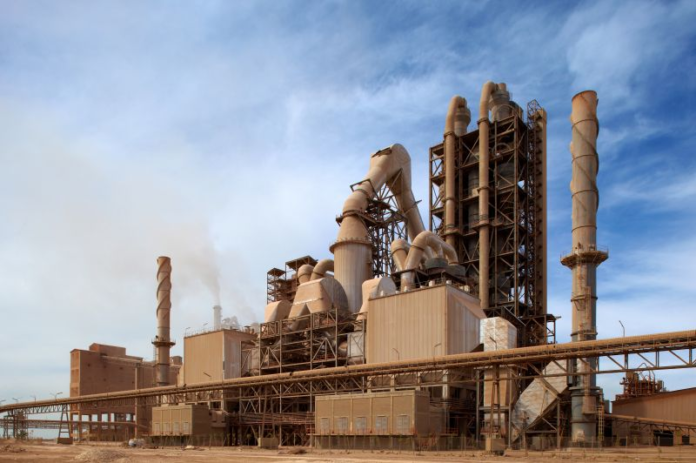Regular readers of this magazine will know that typically companies are not forthright about exactly why they have decided to take X or Y action. At Profit, we do our best through reporting or analysis to come to an understanding of why or how a company is behaving in the way it is, but often, we are simply operating on our own intelligence, piecing together what could possibly be behind an often two sentence notice sent to the Pakistan Stock Exchange.
It seems Lucky Cement are also avid readers of Profit. That is because, in their latest notice issued to the PSX on February 1, they decided to make our lives easier, and clearly spell out three reasons why they were behaving in a certain manner. Thanks, Lucky Cement.
So, the action itself: the company has decided to enhance its cement production capacity at its Pezu plant by 3.15 million tons annually. The total project costs for the above expansion will be finalized after conclusion of negotiations with the suppliers and contractors. The construction work on the project is expected to start this financial year, and is expected to have a construction period of 1.5 to two years.
Now, for the logic behind this expansion. Reason one, the increasing demand in the domestic cement industry; reason two, on the back of the revival of economic activity; and reason three, and uptick in construction projects including both retail level projects as well as mega infrastructure development projects.
Before diving into exactly what this entails, it is helpful to first take a historical look at Lucky Cement.
The company is part of the Yunus Brothers Group. This group is behind such companies as Gadoon Textile Mills, Yunus Textiles, Tabba Heart Institute, Tabba Kidney Institute, and perhaps most famously, the LuckyOne Mall in Karachi, which is the largest mall in Pakistan. Lucky Cement in turn owns 55% of ICI Pakistan, and 71.55% of Kia Lucky Motors, among others. Members of the Tabba family sit on the board of directors, while Muhammad Ali Tabba is the CEO.
The company was incorporated in 1993, and listed on the then Karachi Stock Exchange in 1994. It commenced commercial operations in 1996., and by 2005, had become Pakistan’s largest cement producer, and by 2006, had become Pakistan largest cement exporter. Lucky cement signed a joint venture to set up a cement plant in the Democratic Republic of Congo in 2011, and another joint venture to set up a cement grinding plant in Iraq in 2012. Interestingly, the company bagged some local recognition: the CEO was awarded the Sitara-i-Imtiaz in 2018, while the chairman was awarded the Sitara-i-Imtiaz in 2019.
The registered office of the Company is located at Pezu, District Lakki Marwat in Khyber Pakhtunkhwa, and the head office is situated at Muhammad Ali Housing Society, in Karachi. The company has two production facilities: at Pezu, District Lakki Marwat, and at Main Super Highway in Karachi.
The Pezu plant is very clearly, however, the star of the company. Its total capacity is 12.15 MPTA, makign Lucky cement the largest cement producer in Pakistan.
In the last six years, the company net turnover has stayed above the Rs41 billion mark. In 2014, the company’s net turnover stood at Rs 44.8 billion, climbing to its peak of Rs 48 billion in 2019, before falling to Rs41.8 billion in 2020. The company’s profit after taxation has fallen from a peak of Rs13.7 billion in 2016 to Rs10.49 billion in 2019, and then just Rs3.34 billion in 2020.
What happened that year? According to the company’s latest annual report ending June 2020, “As s result of Covid-19 lockdowns locally and internationally during fourth quarter 2020, both local and export sales were adversely effected.”
But that was then. In the latter half of the 2020, the cement sector saw a boom – which is what the Lucky Cement notice was referring to. For one, the government recently announced a slew of policies meant to spur growth in the housing and construction sector, which appear at last to be bearing fruit. One of those policies was the mandate by the State Bank of Pakistan for the banking sector to increase lending towards construction and real estate to equal 5% of their total private sector lending.
Then in July, the Prime Minister announced major construction projects and provided a subsidy of Rs30 billion for the Naya Pakistan Housing Project so that people could build their dream house at an affordable cost. The many projects of the China-Pakistan Economic Corridor (CPEC) are also still ongoing, pandemic or no pandemic.
Analysts have also noted that recovery has been driven in large part by actual demand for construction materials as the country’s real estate sector gears up to offer affordable housing to a rising middle class that increasingly has the ability to buy their own homes.
It is the combination of these factors that have led Lucky Cement to feel, well, a little lucky. So what if the year 2020 was not as profitable as the year before? As far as management is concerned, this is the right time to plan an expansion.









